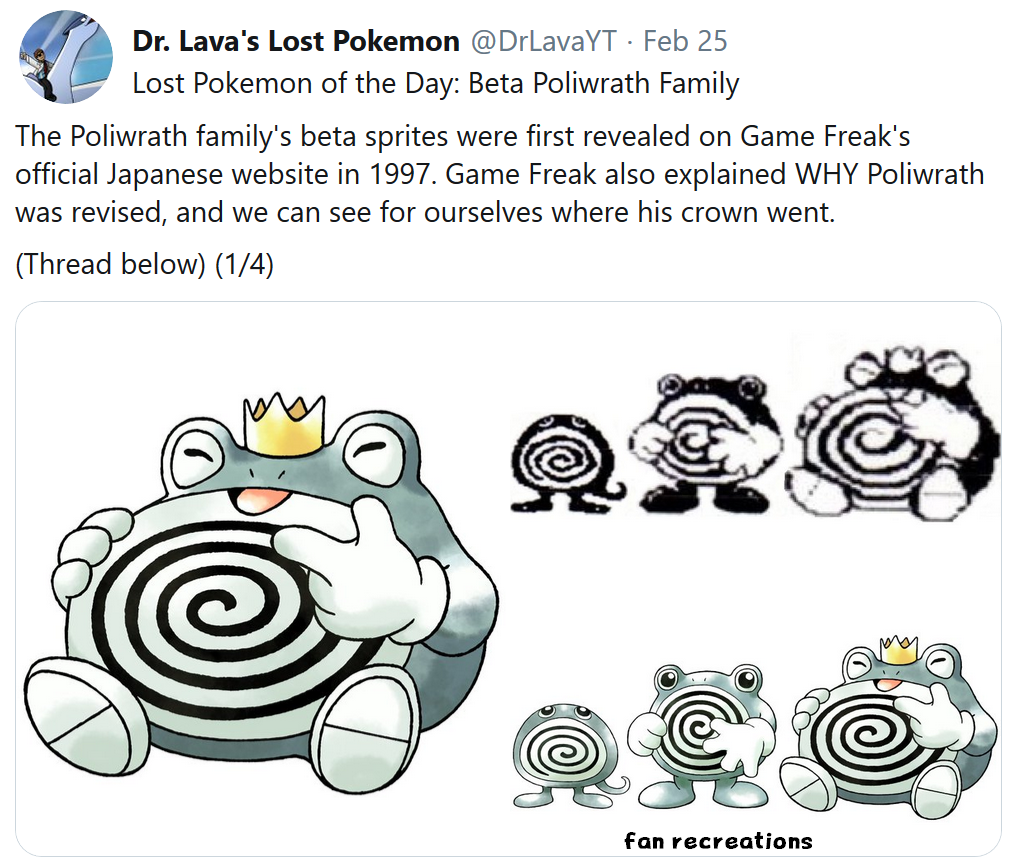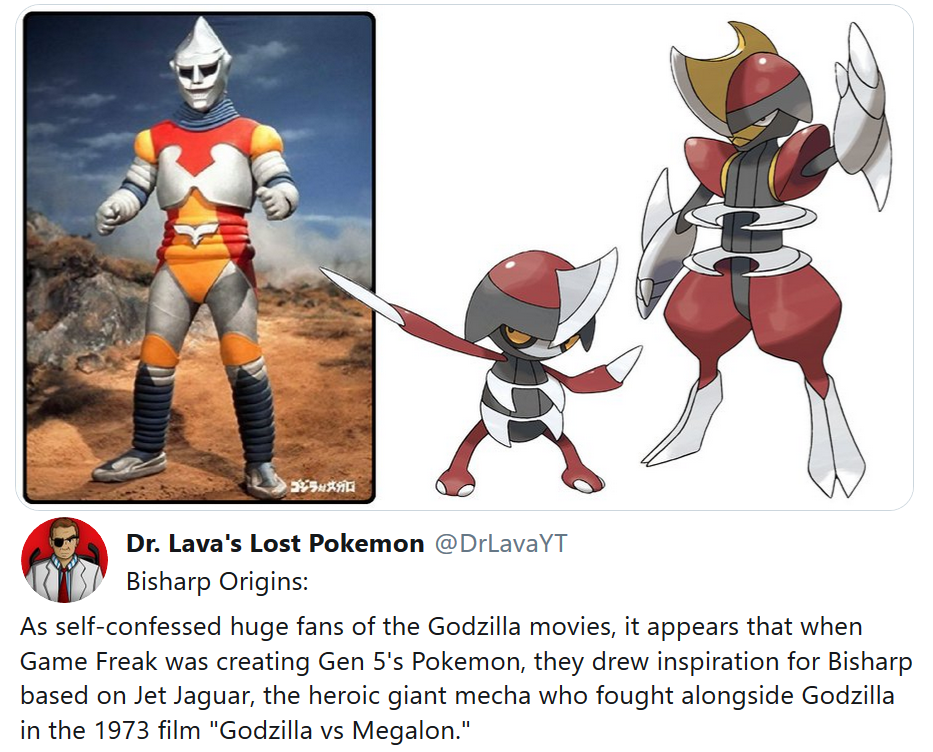
Gen 5 Historia: Pokemon Origin Stories (Part 4)
Sugimori explains Gen 5 Pokemon origin stories
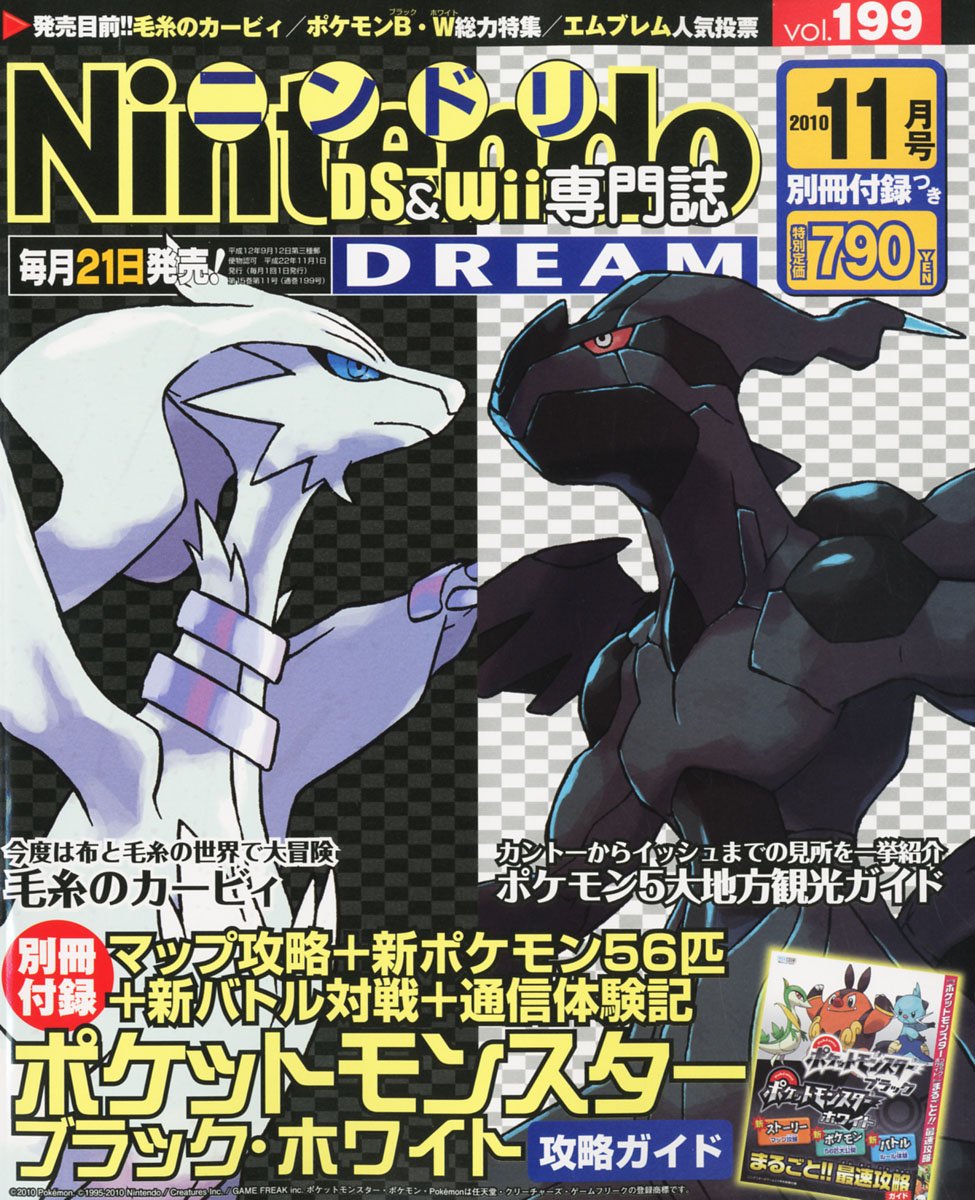
Written by Dr Lava, December 1 2019
The following interview snippets were originally published in several 2011 issues of Nintendo Dream magazine, the Japanese equivalent of Nintendo Power. In these 2011 magazines, Game Freak designers revealed the design origins of more than a hundred Gen 5 Pokemon. This is the first time these origin stories have been translated into English and made publicly available. The same goes for origin stories in volume 201, 204, and 205, which have also been translated and published on this website.
In this interview, lead Pokemon designer Ken Sugimori is joined by two more designers: Takao Unno (who later served as director for Black and White 2) and Yusuke Ohmura (who took over Sugimori’s position as lead designer for Sun and Moon).
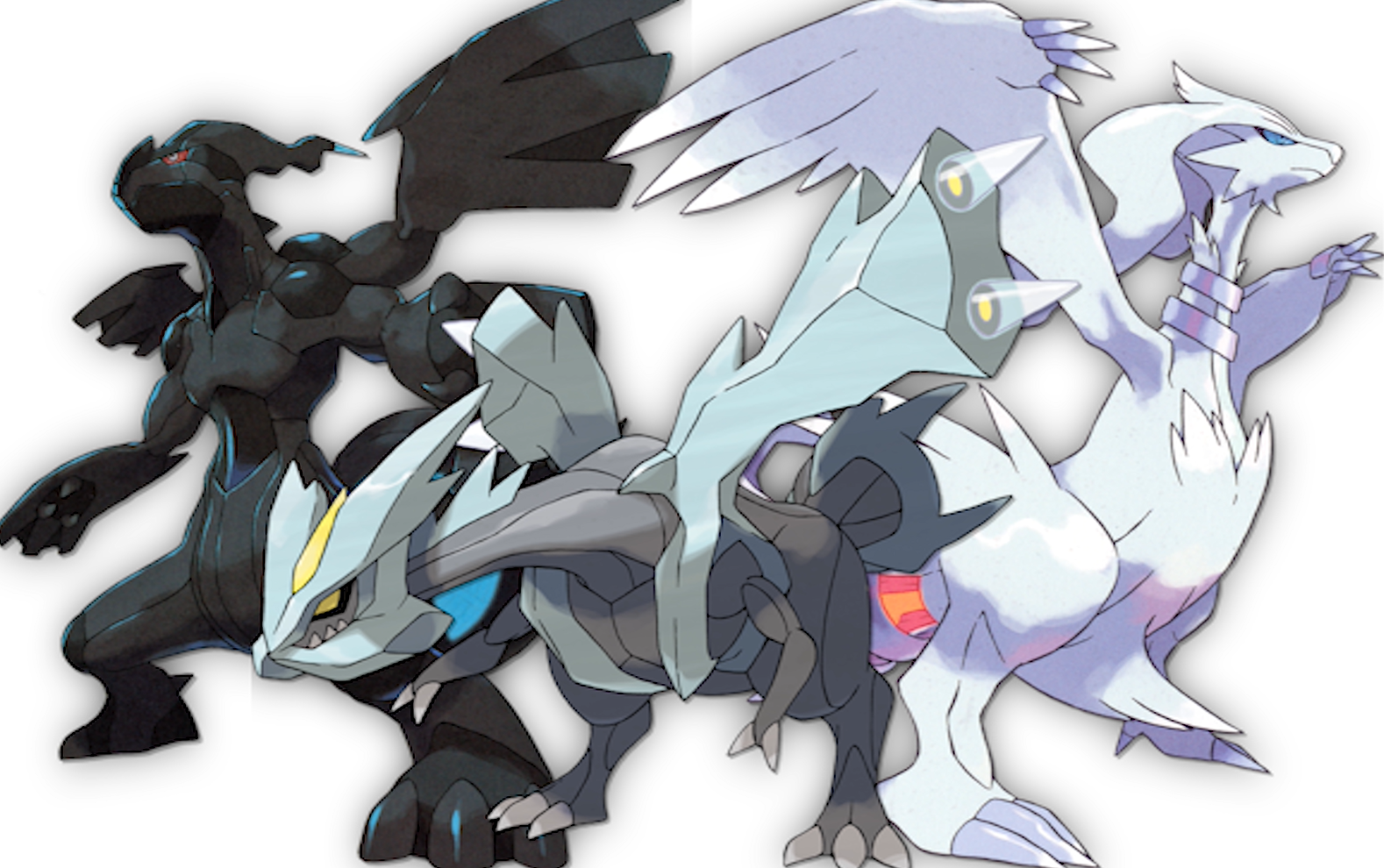
Only the Tao Trio Remain
These are the last Gen 5 origin stories covered in these translations — all except those of the Tao Trio, who I’m saving up to use in a YouTube video before I publish them here. Totalling about 8 pages in length including my commentary, those 3 origin stories will end up being published in a stand-alone article. If you don’t want to wait for the YouTube video, you can read the full article now on my Patreon page — where folks can help support my work and also read new translations months before they’re published.
These magazines were hunted down and bought from Japan at considerable effort and expense. I want to give a big thanks to Stef for helping me track them down, as well as to Kaihatsu, Bekah, Ciara, Fran, and especially Yuji Yoshida, who helped translate these magazines. I spent hundreds of dollars on previous translations earlier this year, so their pro-bono translation work is greatly appreciated.
Okay, now onto the last seventeen Gen 5 Pokemon origin stories.
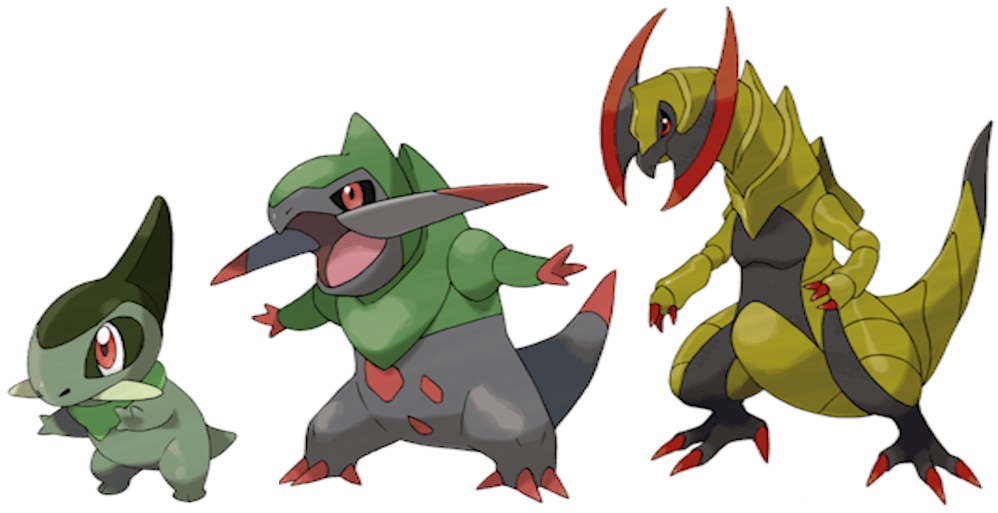
Axew • Fraxure • Haxorus
Sugimori: “Haxorus might have been the earliest Unova Pokemon ever created. It was designed when we were still working on Pokemon Platinum, and development of Black & White had barely even started yet. There was a new girl hired onto the design team, and I had her create a design based on the concept of a cool, dinosaur-like Pokemon.”
“She came up with the idea that Haxorus attacks by swinging its axe-like fangs instead of using its mouth to bite, kind of like a description I read on a dinosaur wiki. At first I thought it wasn’t too Pokemon-like, since it was designed by a newbie — however, I later decided that might actually be what makes the Pokemon so cool, so I included it in the game.”
“Haxorus’ pre-evolutions were reverse-engineered from Haxorus’ design. The defining characteristic of this Pokemon is its fangs, so I made the most drastic changes occur between Fraxure and Haxorus.”
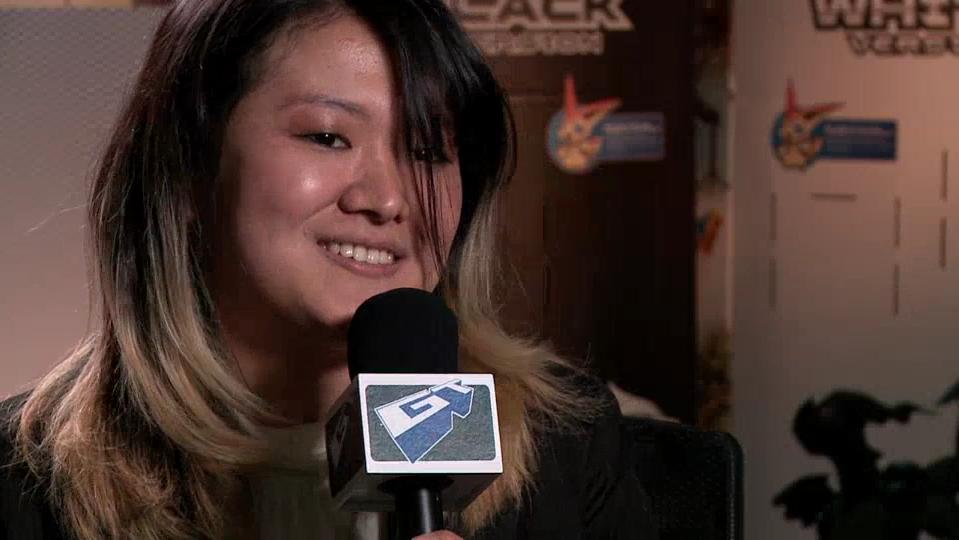
Dr Lava’s notes: Based on Sugimori’s description, the designer in question could only be Mana Ibe, who began working at Game Freak as a monster designer starting with Black and White. For Generation 5, she’s claimed to have designed about 10 Pokemon — including Victini, Stunfisk, the Stoutland family, and the Haxorus family. Although she officially join Sugimori’s team in Gen 5, she actually joined unofficially during the development of Platinum — a game in which she was given a Special Thanks in the credits.
In addition to the Haxorus line, it seems quite a few Pokemon families were designed backwards. Like this next one for example…
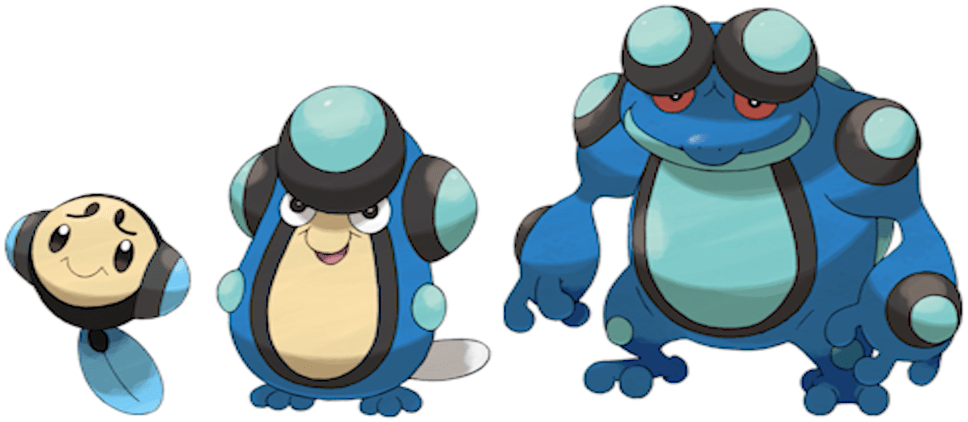
Tympole • Palpitoad • Seismitoad
Sugimori: “First of all, we started out with Seismitoad, who’s based on the Japanese common toad. I also wanted to make this line of frog Pokemon feel a little different, since we’d already made a series of Pokemon based on frogs — like the Poliwag line. Though the Poliwag line was a bit of a curve-ball, since it changes into something completely different at the end! (laughs)”
“This time we went for a more traditional frog-like evolution. As for their head designs, we started with Seismitoad’s, then we worked backward from there to come up with the pre-evolutions. The mouth ended up protruding out a little like this when we worked backwards.”
Dr Lava’s notes: Poliwrath does indeed stand out as quite different to Poliwag and Poliwhirl — but that wasn’t always the case. In 1997, Game Freak posted the Poliwag family’s beta sprites on their official Japanese website. As you can see, Poliwrath was originally quite different. Pokemon designer Atsuko Nishida explained the reason why the original Poliwrath design was thrown out:
Atsuko Nishida: “Poliwag’s final evolution, Poliwrath, as it appears in Picture 2, doesn’t look very tough. Players wouldn’t have been happy if they’d gone to all the trouble of evolving Poliwag only for it to look weak. ” [Translation courtesy of Glitterberri].
Dr Lava’s notes: The Seismitoad family’s design process is similar to that of the Eelektrik family covered in volume 205’s interview. Sugimori’s team came up with a particular design based on a real animal — in this case the common Japanese toad — then worked backwards, mirroring the animal inspiration’s real-life physical maturity.

Klink • Klang • Klinklang
Sugimori: “Klink was created after we received an order for something inorganic. I came up with an idea for a gear-based Pokemon, and since the anime was coming up, I thought it would be a fun concept. This design falls under my favorite category — Pokemon with good faces. What’s interesting is that its face changes as its gears turn. When it evolves, extra gears are added, so it produces more energy. The Klink family is a similar concept to Magneton, Exxegutor, and Dugtrio — multiples of the first stage.”
Dr Lava’s notes: This is a pretty similar design process to the one described for the Vanilluxe family described in volume 205’s interview — evolutions that are essentially multiples of the family’s first stage.
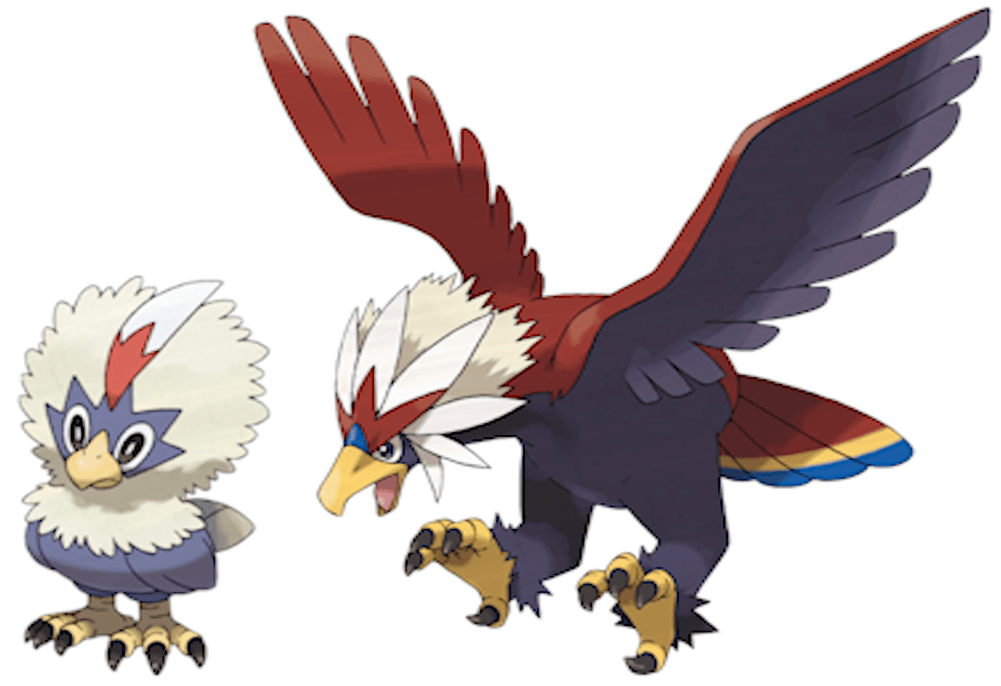
Rufflet • Braviary
Unno: “Braviary are all male, while Mandibuzz are all female — these two families are counterparts. In the early stages of development, I created the designs for Braviary and Rufflet. Initially, I wasn’t aware of the male and female exclusivity concept. At that time, we were starting to consider how we could incorporate the game’s setting of New York into some designs — and more broadly, of America. Then I came up with the idea of creating a Pokemon based on a bald eagle. We also made use of a star shape and the colors red, white, and blue.”
“For a long time, when working on Pokemon designs, the team had ideas about a bird of prey Pokémon, but this was the first time we finally got to make it a reality. We included the eagle’s strong legs — based on how they’re depicted in Native American art.”
“The feather we added to Rufflet’s head is a reference to Native American feather decorations, but we always loved the look of chicks’ fluffy white heads, so we gave Rufflet a big round head to emphasize that characteristic.”
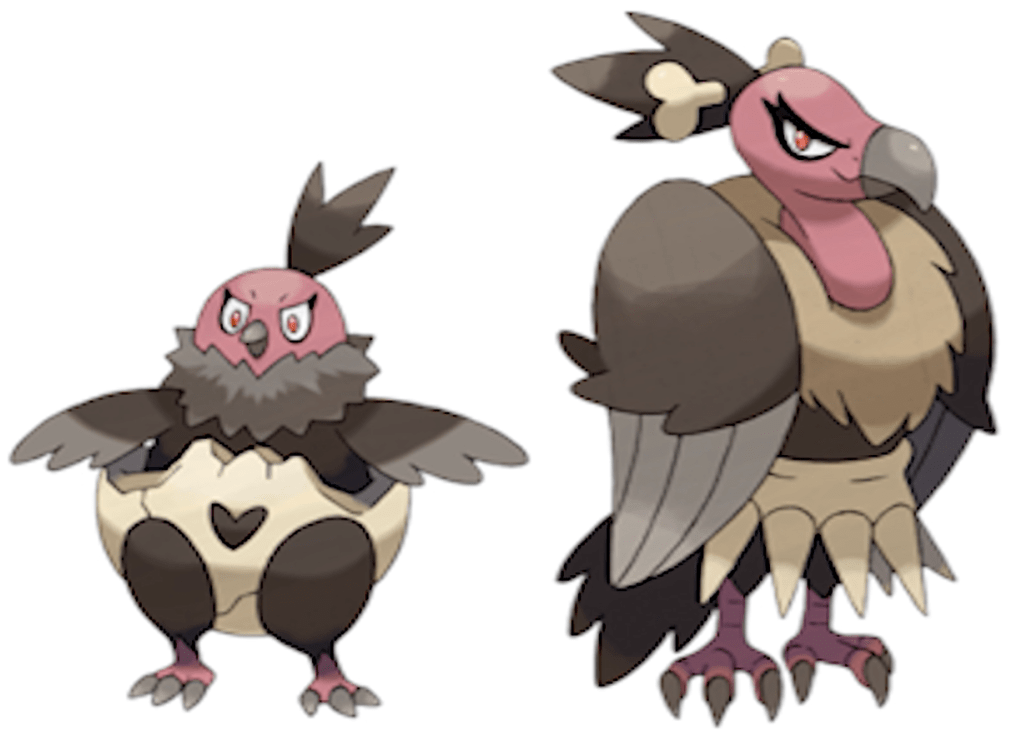
Vullaby • Mandibuzz
Sugimori: “On the other hand, Vullaby and Mandibuzz were created in the latter half of development. What got this ball rolling was that we’d received an order for a Dark-type — and the Englishman who designed Golurk had already been working on a bird Pokémon. At that point, there were too many bird Pokémon already, but despite that fact, Vullaby was approved. Like Lilligant and Whimsicott, these two families were counterparts. Braviary has a fatherly energy, while Mandibuzz is more motherly — so that worked out nicely.”
“Regarding the bones around Vullaby’s lower body, we came up with the idea of Vullaby using dead Pokemon’s bones as a nest and growing up inside them. Mandibuzz’s lower body also has bones, but with a toothy shape. So when Vullaby is in her egg and Mandibuzz is warming it, it forms an upside-down skull. We’re pretty happy when we can work in those kind of details to the designs.”
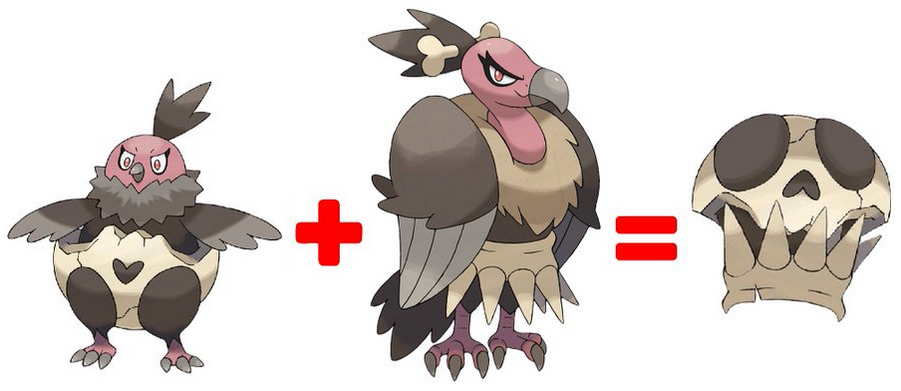
Dr Lava’s notes: I’d always assumed Vullaby was sitting in a half-hatched egg. After reading Sugimori’s description, I now realize it’s actually the top half of a broken Pokemon skull. The heart-shaped hole is the nose, while Vullaby’s legs fit through the eye sockets. And what appears to be Mandibuzz’s skirt is actually a row of a dead Pokemon’s teeth. Wild.
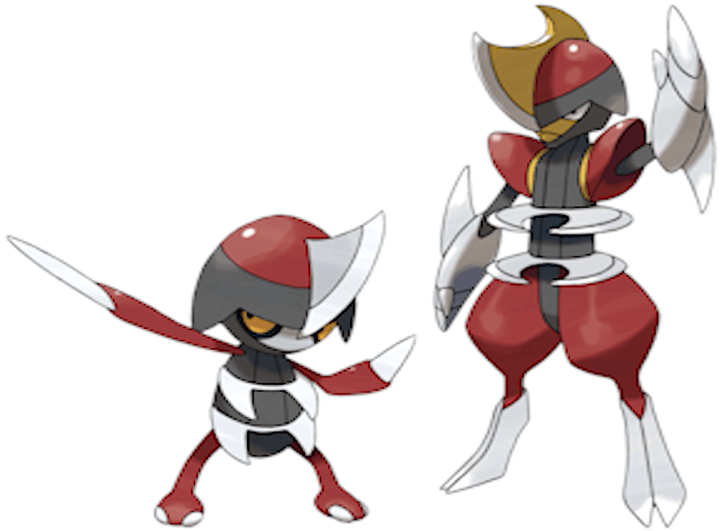
Pawniard • Bisharp
Sugimori: “The order we received was to design a Pokemon that dwells in urban cities, and is Steel/Dark type — so I thought it should be something artificial. I told the designer to make a Pokemon that “is covered with sharp objects, and hunts anybody who gets close,” and he came up this Samurai-like Pokemon.”
Sugimori: “Some concept art shows Bisharp ordering a bunch of Pawniard to jump onto an enemy, stabbing it in the process — which explains the sharp blades on Pawniard’s stomach. Even though they look humanoid, their design is a bit insect-like as well.”
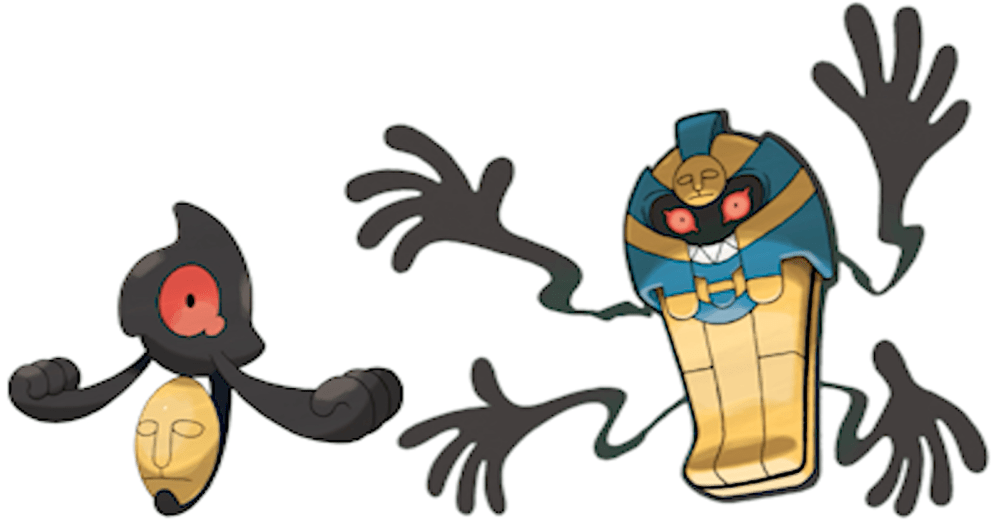
Yamask • Cofagrigus
Sugimori: “Yamask and Cofagrigus are inspired by stuff that’s a little bit scary, but they’re not just scary — we made sure to design them so that they have a certain charm to them. Any Pokemon should be able to become your friend, so we make sure no one will be thinking “I can’t be friends with a Pokemon like this.” Yamask’s blank facial expression is its most charming feature. Or at least that was our intention when we designed it this way, but it seems some young children still find Yamask kind of scary anyway (laughs).”
Dr Lava’s notes: The mask Yamask holds is a death mask, which is made from the mold of a dead person’s face shortly after their death. Yamask’s Pokedex entry in White reads: “These Pokémon arose from the spirits of people interred in graves in past ages. Each retains memories of its former life.” Its Black version Pokedex entry is even creepier: “Each of them carries a mask that used to be its face when it was human. Sometimes they look at it and cry.”
And of course, Cofagrigus is a sarcophagus — a coffin that holds the remains of the dead. They’re both Egyptian-themed as well, so Cofagrigus presumably has a mummy inside. After all, Cofagrigus’ ability is called Mummy.
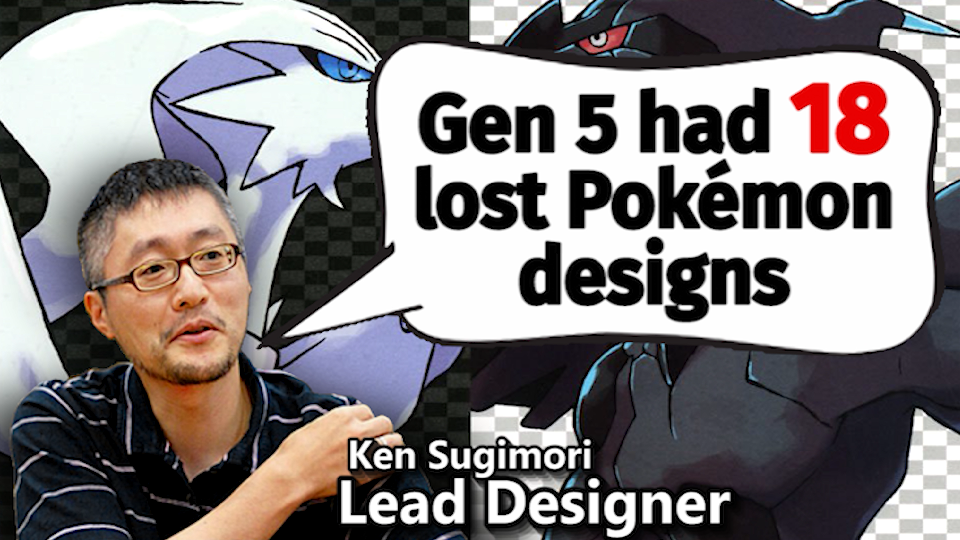
More Translations in Progress
And that wraps up this series of translations covering the origin stories of Gen 5 Pokemon — all except for the Tao Trio. But I’ve got more translations in progress, and I’m always on the hunt for more untranslated Pokemon interviews, so if you’ve got a lead on any — or want to contact me for any reason at all — you can find me on Twitter where I’m @DrLavaYT. If you’d like to read more Pokemon interviews, check out this website’s homepage.
If you’d be willing to sign up for a monthly pledge on my Patreon page, it would really make a huge difference in helping make more translations possible, as well as grant early access to that 8 page article about the Tao Trio’s origins.

Thank you to Patreon Supporters
As always, I’d like to give a big thanks to my Patreon supporters who help finance this website and my YouTube channel:
• Platinum Supporters: Boreas Bear, Reoko, Stuart Radley, HabaneroPeppers
• Gold Supporters: Afevis, Besipeitl, Brad Benson, KissShot
• Silver Supporters: Austin Elliot, Ben Lander, Cody Renton, Dan Attra, Dominik Bender, Elvin Alfonso, Evan Miller, FifthDream, HelpMePlease, Jacky H, Jade M, Jason White, Joey Keilholz, Jonathan Henn, Klotzzilla, Leo Espinoza, Maximilian Kwiatkowski, Nathan Labourdette, Patrick Hood, Paper Wings, Robert Oberlies, Shelby, Slugabed, Znub, Will LaBranche, Brady Chartier, Robert Oberlies, Shakky, Steffen Jørgensen
Related Articles:
• Gorochu: Developer Translations and the 2019 Leak
• Gold & Silver’s Leaked 1997 Demo: All 1004 Sprites
• How Three Monsters in a 1997 JP Magazine Became Pokemon
